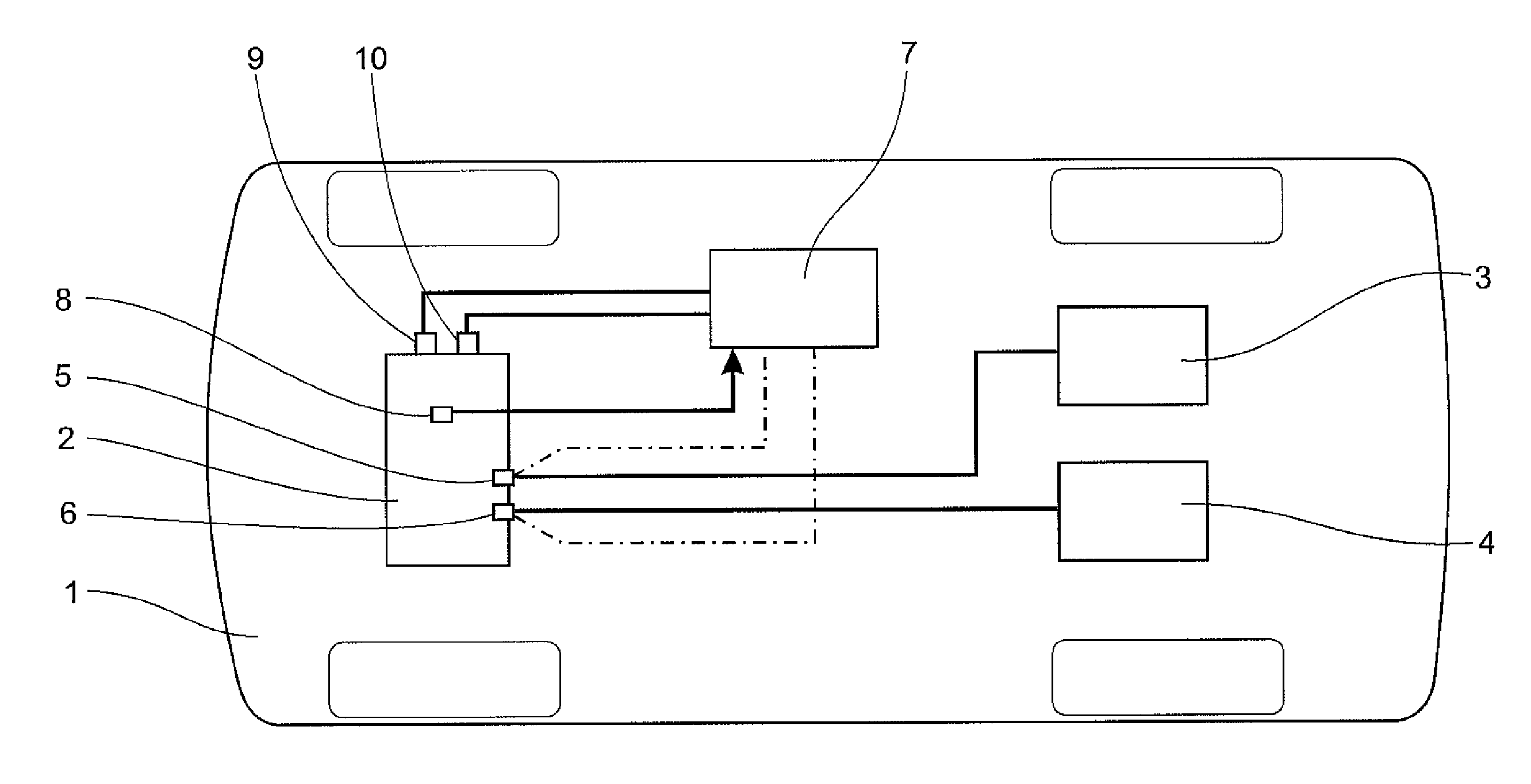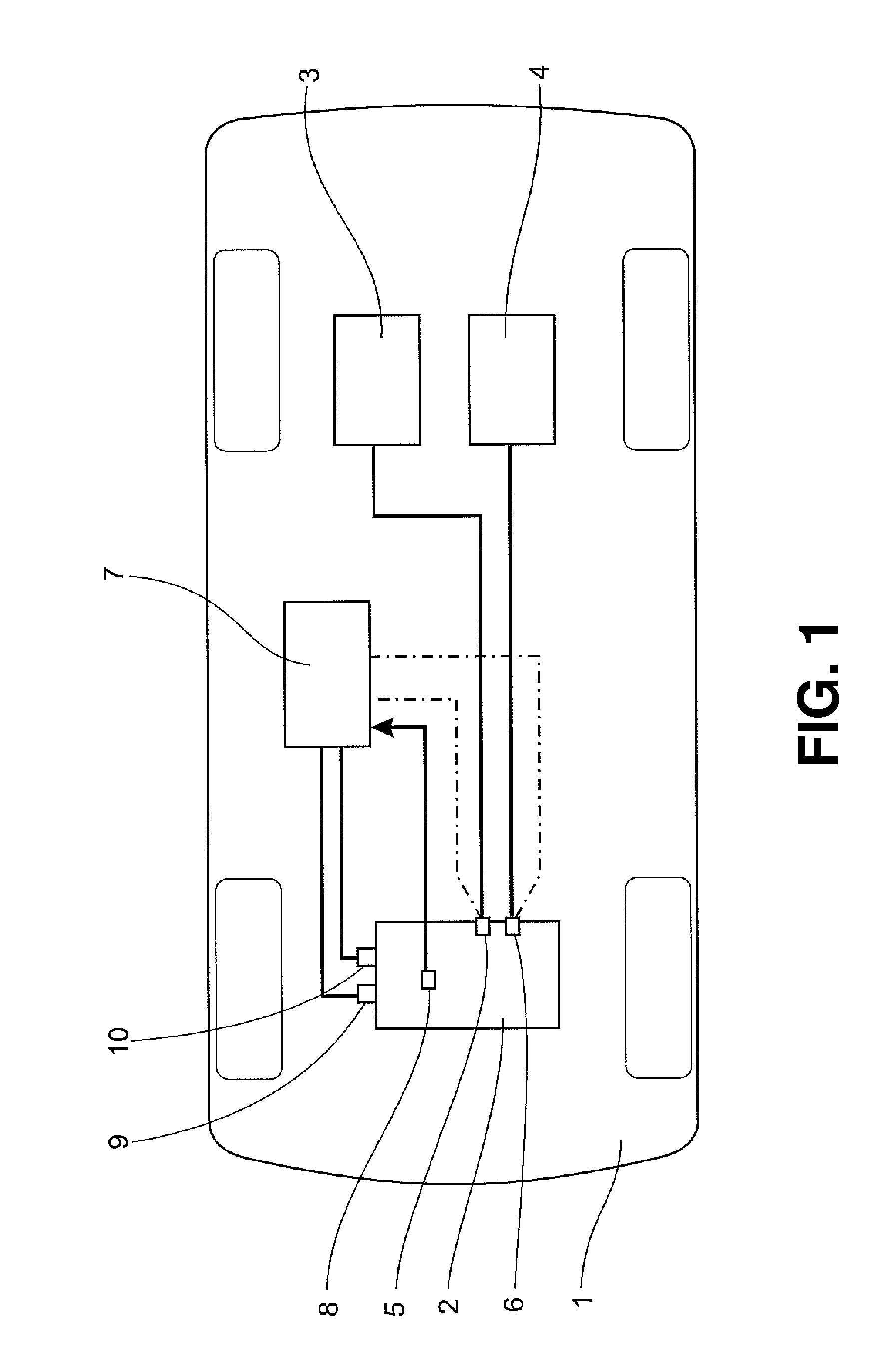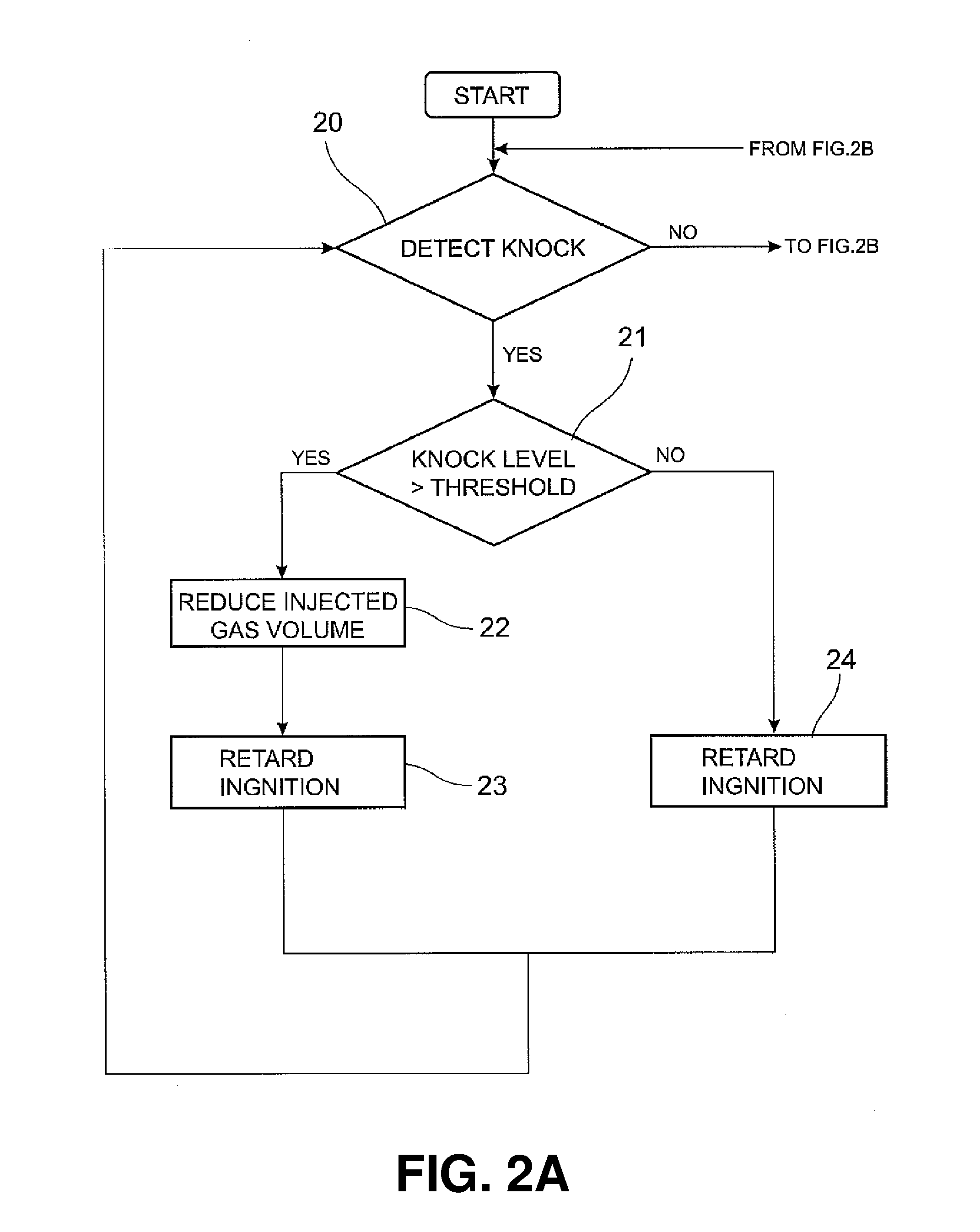Dual fuel engine system and method of operating
a fuel engine and dual fuel technology, applied in the direction of engine ignition, electric ignition installation, electrical control, etc., can solve the problems of high particulate emissions, incomplete combustion of diesel fuel, and low oxide nitrogen (nox) and particulate emission levels of compression-ignited engines and diesel engines in particular. to achieve the effect of maximizing the use of gaseous fuel
- Summary
- Abstract
- Description
- Claims
- Application Information
AI Technical Summary
Benefits of technology
Problems solved by technology
Method used
Image
Examples
Embodiment Construction
)
[0055]FIG. 1 schematically illustrates a vehicle 1 provided with a dual fuel engine 2. Dual fuel engine 2 is operable on a gaseous fuel drawn from a first tank 3 and on a compression ignitable liquid fuel drawn from a second tank 4. Engine 2 comprises at least one combustion chamber (not shown), which is supplied with gaseous fuel controlled by a first valve 5, in the form of a first controllable injector, connected to first tank 3. Each combustion chamber is further supplied with liquid fuel controlled by a second valve 6, in the form of a second controllable injector, connected to second tank 4. First controllable injector 5 can be placed in an air intake conduit of the combustion chamber, while second controllable injector 6 can be arranged to inject fuel directly into the combustion chamber. Alternatively, the first and second controllable injectors can be combined into a common dual fuel injector, preferably but not necessarily arranged to inject fuel directly into the combust...
PUM
 Login to View More
Login to View More Abstract
Description
Claims
Application Information
 Login to View More
Login to View More - R&D
- Intellectual Property
- Life Sciences
- Materials
- Tech Scout
- Unparalleled Data Quality
- Higher Quality Content
- 60% Fewer Hallucinations
Browse by: Latest US Patents, China's latest patents, Technical Efficacy Thesaurus, Application Domain, Technology Topic, Popular Technical Reports.
© 2025 PatSnap. All rights reserved.Legal|Privacy policy|Modern Slavery Act Transparency Statement|Sitemap|About US| Contact US: help@patsnap.com



